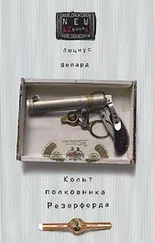THE BEST OF LUCIUS SHEPARD
by Lucius Shepard
The Man Who Painted the Dragon Griaule
“Other than the Sichi Collection, Cattanay’s only surviving works are to be found in the Municipal Gallery at Regensburg, a group of eight oils-on-canvas, most notable among them being Woman With Oranges . These paintings constitute his portion of a student exhibition hung some weeks after he had left the city of his birth and travelled south to Teocinte, there to present his proposal to the city fathers; it is unlikely he ever learned of the disposition of his work, and even more unlikely that he was aware of the general critical indifference with which it was received. Perhaps the most interesting of the group to modern scholars, the most indicative as to Cattanay’s later preoccupations, is the Self Portrait , painted at the age of twenty-eight, a year before his departure.
“The majority of the canvas is a richly varnished black in which the vague shapes of floorboards are presented, barely visible. Two irregular slashes of gold cross the blackness, and within these we can see a section of the artist’s thin features and the shoulder panel of his shirt. The perspective given is that we are looking down at the artist, perhaps through a tear in the roof, and that he is looking up at us, squinting into the light, his mouth distorted by a grimace born of intense concentration. On first viewing the painting, I was struck by the atmosphere of tension that radiated from it. It seemed I was spying upon a man imprisoned within a shadow having two golden bars, tormented by the possibilities of light beyond the walls. And though this may be the reaction of the art historian, not the less knowledgeable and therefore more trustworthy response of the gallery-goer, it also seemed that this imprisonment was self-imposed, that he could have easily escaped his confine; but that he had realized a feeling of stricture was an essential fuel to his ambition, and so had chained himself to this arduous and thoroughly unreasonable chore of perception…”
— from
Meric Cattany: The Politics of Conception by Reade Holland, Ph.D
1
IN 1853, IN A COUNTRY FAR TO THE SOUTH, in a world separated from this one by the thinnest margin of possibility, a dragon named Griaule dominated the region of the Carbonales Valley, a fertile area centring upon the town of Teocinte and renowned for its production of silver, mahogany and indigo. There were other dragons in those days, most dwelling on the rocky islands west of Patagonia—tiny, irascible creatures, the largest of them no bigger than a swallow. But Griaule was one of the great beasts who had ruled an age. Over the centuries he had grown to stand 750 feet high at the mid-back, and from the tip of his tail to his nose he was 6,000 feet long. (It should be noted here that the growth of dragons was due not to caloric intake, but to the absorption of energy derived from the passage of time.) Had it not been for a miscast spell, Griaule would have died millennia before. The wizard entrusted with the task of slaying him—knowing his own life would be forfeited as a result of the magical backwash—had experienced a last-second twinge of fear, and, diminished by this ounce of courage, the spell had flown a mortal inch awry. Though the wizard’s whereabouts were unknown, Griaule had remained alive. His heart had stopped, his breath stilled, but his mind continued to seethe, to send forth the gloomy vibrations that enslaved all who stayed for long within range of his influence.
This dominance of Griaule’s was an elusive thing. The people of the valley attributed their dour character to years of living under his mental shadow, yet there were other regional populations who maintained a harsh face to the world and had no dragon on which to blame the condition; they also attributed their frequent raids against the neighbouring states to Griaule’s effect, claiming to be a peaceful folk at heart—but again, was this not human nature? Perhaps the most certifiable proof of Griaule’s primacy was the fact that despite a standing offer of a fortune in silver to anyone who could kill him, no one had succeeded. Hundreds of plans had been put forward, and all had failed, either through inanition or impracticality. The archives of Teocinte were filled with schematics for enormous steam-powered swords and other such improbable devices, and the architects of these plans had every one stayed too long in the valley and become part of the disgruntled populace. And so they went on with their lives, coming and going, always returning, bound to the valley, until one spring day in 1853, Meric Cattanay arrived and proposed that the dragon be painted.
He was a lanky young man with a shock of black hair and a pinched look to his cheeks; he affected the loose trousers and shirt of a peasant, and waved his arms to make a point. His eyes grew wide when listening, as if his brain were bursting with illumination, and at times he talked incoherently about “the conceptual statement of death by art”. And though the city fathers could not be sure, though they allowed for the possibility that he simply had an unfortunate manner, it seemed he was mocking them. All in all, he was not the sort they were inclined to trust. But, because he had come armed with such a wealth of diagrams and charts, they were forced to give him serious consideration.
“I don’t believe Griaule will be able to perceive the menace in a process as subtle as art,” Meric told them. “We’ll proceed as if we were going to illustrate him, grace his side with a work of true vision, and all the while we’ll be poisoning him with the paint.”
The city fathers voiced their incredulity, and Meric waited impatiently until they quieted. He did not enjoy dealing with these worthies. Seated at their long table, sour-faced, a huge smudge of soot on the wall above their heads like an ugly thought they were sharing, they reminded him of the Wine Merchants Association in Regensburg, the time they had rejected his group portrait.
“Paint can be deadly stuff,” he said after their muttering had died down. “Take vert Veronese, for example. It’s derived from oxide of chrome and barium. Just a whiff would make you keel over. But we have to go about it seriously, create a real piece of art. If we just slap paint on his side, he might see through us.”
The first step in the process, he told them, would be to build a tower of scaffolding, complete with hoists and ladders, that would brace against the supraocular plates above the dragon’s eye; this would provide a direct route to a 700-foot-square loading platform and base station behind the eye. He estimated it would take 81,000 board feet of lumber, and a crew of ninety men should be able to finish construction within five months. Ground crews accompanied by chemists and geologists would search out limestone deposits (useful in priming the scales) and sources of pigments, whether organic or minerals such as azurite and hematite. Other teams would be set to scraping the dragon’s side clean of algae, peeled skin, any decayed material, and afterwards would laminate the surface with resins.
“It would be easier to bleach him with quicklime,” he said. “But that way we lose the discolourations and ridges generated by growth and age, and I think what we’ll paint will be defined by those shapes. Anything else would look like a damn tattoo!”
There would be storage vats and mills: edge-runner mills to separate pigments from crude ores, ball mills to powder the pigments, pug mills to mix them with oil. There would be boiling vats and calciners—15-foot-high furnaces used to produce caustic lime for sealant solutions.
“We’ll build most of them atop the dragon’s head for purposes of access,” he said. “On the frontoparital plate.” He checked some figures. “By my reckoning, the plate’s about 350 feet wide. Does that sound accurate?”
Читать дальше






